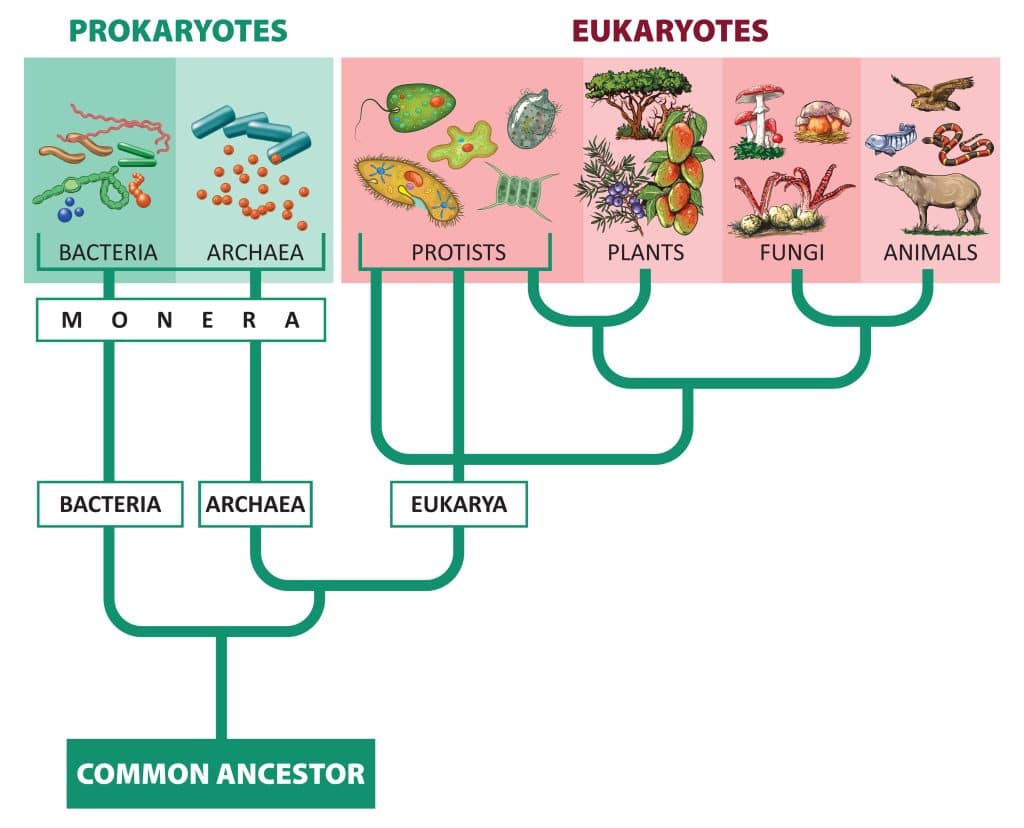Section 5: Domains and Kingdoms
Over time, new information and methodologies for studying organisms changed Linnaeus’s original framework for organizing living things. Today organisms are grouped into three domains and six kingdoms based on their cell type, ability to make food, and the number of cells that make up their bodies.

The first domain is Bacteria. Bacteria are tiny, single-celled organisms that are found everywhere. They are present in the soil, water, and air. Characterized as prokaryotic, bacteria lack a nucleus, with cell walls reinforced by peptidoglycan for structural support. Remarkably versatile, they can exhibit both heterotrophic and autotrophic modes of nutrition. E. Coli is an example of bacteria.
Additionally, among the unicellular and prokaryotic organisms are Archaea, which live in some of the most extreme environments you can imagine. These organisms can be found in volcanoes or hot springs where oxygen is scarce or nonexistent altogether. They can also exhibit heterotrophic and autotrophic characteristics, but unlike bacteria, their cell walls lack peptidoglycan.
Finally, the domain Eukarya consists of all the organisms with a nucleus, including the kingdoms Protista, Fungi, Plantae, and Animalia.
There are three main protists: plant-like protists like algae, animal-like protists called protozoans, and fungus-like protists like slime molds. They all are eukaryotic, which means their cells contain a nucleus. The cells of algae contain chloroplasts, where photosynthesis takes place. Protozoans thrive in environments with moisture, including oceans and freshwater.
The kingdom Fungi includes mushrooms and yeasts. Fungi possess cell walls made of chitin and are heterotrophic, deriving nutrients by feeding on deceased and decomposing plant and animal matter.
The kingdom Plantae are eukaryotes that make their food through photosynthesis. Most are multicellular, but some green algae are unicellular. They are autotrophs with cell walls that contain cellulose. The plant kingdom includes green algae, mosses, ferns, and flowering plants.
Unlike plants, those in the kingdom Animalia have no cell walls or chloroplasts. They are multicellular and heterotrophic, including sponges, worms, insects, fish, and mammals.
Review:
- Identify the six kingdoms of life.
- Describe characteristics of the domain Eukarya.
- Describe characteristics of the Kingdom Fungi.
